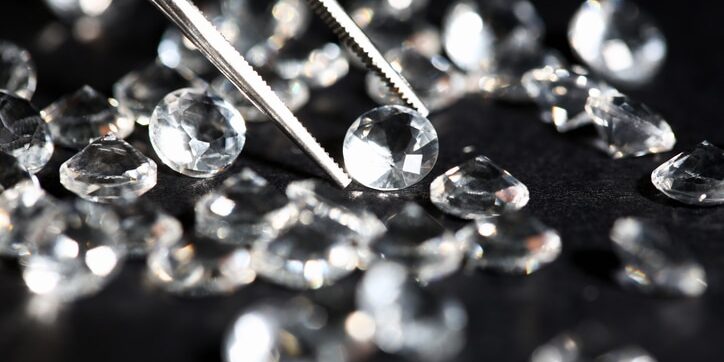Know Your Budget
The price of a Diamond can be a significant stopping point, for anyone. First, consider your budget. When it comes to diamonds, if they are priced at a bargain rate, there’s likely a reason for it in terms of quality. Feel comfortable communicating your budget to your Jeweler.
Do Your Research
Research the “4 Cs” (Cut, Color, Clarity and Carat) before the purchase of your Diamond. After researching, you will not be an expert and will still rely upon the help and guidance from your Jeweler. Weigh your options to obtain the best value for you.
Consider the 4 Cs of Diamonds
A few factors to consider and observe when making your decision. These include:
CUT
Cut is perhaps the most noticeable of the 4Cs. Cut does not refer to a Diamond’s shape, but rather to the quality of workmanship (proportion and arrangement of facets). The quality of a Diamond’s Cut determines the amount of brilliance, sparkle and fire it shows. Grades range from ‘Excellent’ to ‘Poor.’
COLOR
Color measures a Diamond’s absence of color. This is because most “colorless” or “white” Diamonds actually contain trace amounts of yellow, brown or gray color. The less color in a Diamond, the more desirable and valuable it is. There are 23 color grades on the D-to-Z scale, with D meaning that a Diamond has no detectable color at all and Z meaning that a diamond has “light” color. Any Diamond beyond the Z color grade is a fancy color Diamond and is evaluated on a different color scale.
Color grade impacts the price of a stone, but differences of one to three color grades are not easily detectable to untrained eyes. Diamonds graders evaluate diamonds face-down in special environments to see subtle color differences.
CLARITY
Clarity measures the amount, size and placement of internal ‘inclusions’ and external ‘blemishes.’ Inclusions include small crystals or fissures within the Diamond. Blemishes include chips. Grades range from ‘Flawless,’ which means a Diamond has no visible imperfections at 10x magnification, to ‘Included,’ which means a Diamond contains a significant number of imperfections. Diamonds with grades down to VS2 (Very Slightly Included) or SI1 (Slightly Included) do not typically have eye-visible inclusions. These Diamonds can be good value. Diamonds I1 (Included) or lower have inclusions that are easily seen and can appear less attractive; some of these inclusions might also impact the diamond’s durability.
CARAT
Carat refers to a Diamond’s weight. Generally speaking, the higher the carat weight, the larger the Diamond appears and the more valuable the stone. How large a Diamond appears also depends on its proportions. For example, a one-carat Diamond that is wider but has shallow proportions will appear larger than a one-carat Diamond with excellent proportions.
View the Diamond Before You Buy It
Physically viewing the diamond, you’re purchasing, is important in the diamond-buying process. When buying a Diamond, from a brick-and-mortar store, you can be there with the Jeweler to select your Diamond. The Jeweler will show you the diamond under magnification.
Get to “Noe” your Jeweler!
With over Four Decades, in the industry, Noe’s Jewelry provides expert Diamond knowledge to all our Customers. We feel it’s important you know about “Your” Diamond and help you obtain your desired outcome. Visit our website to view our services and online inventory.
Sources
Noe’s Jewelry – Jewelry Sales, Jewelry & Watch Repair, Engraving (noesjewelryflorida.com)
Learn How to Buy a Diamond with the GIA Diamond Buying Guide | 4Cs of Diamond Quality by GIA

